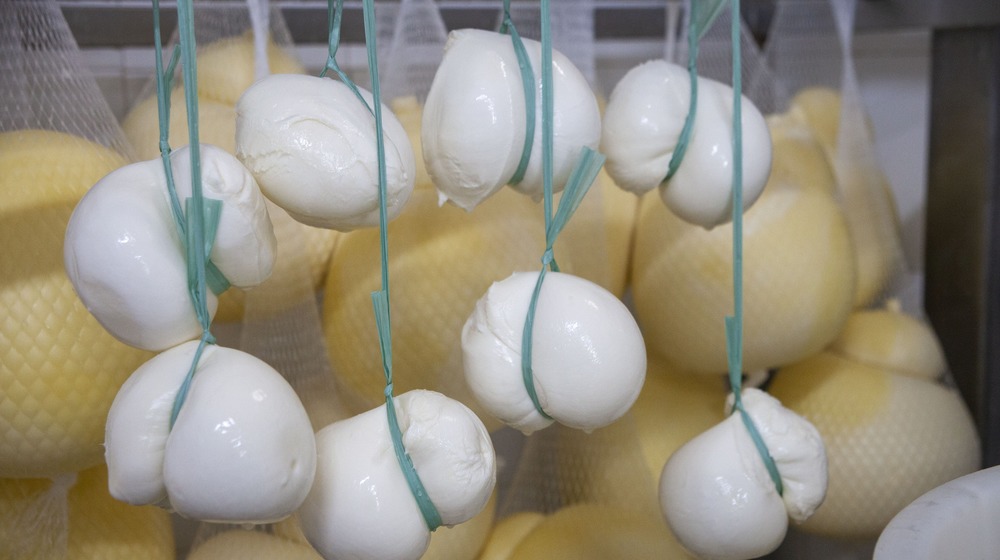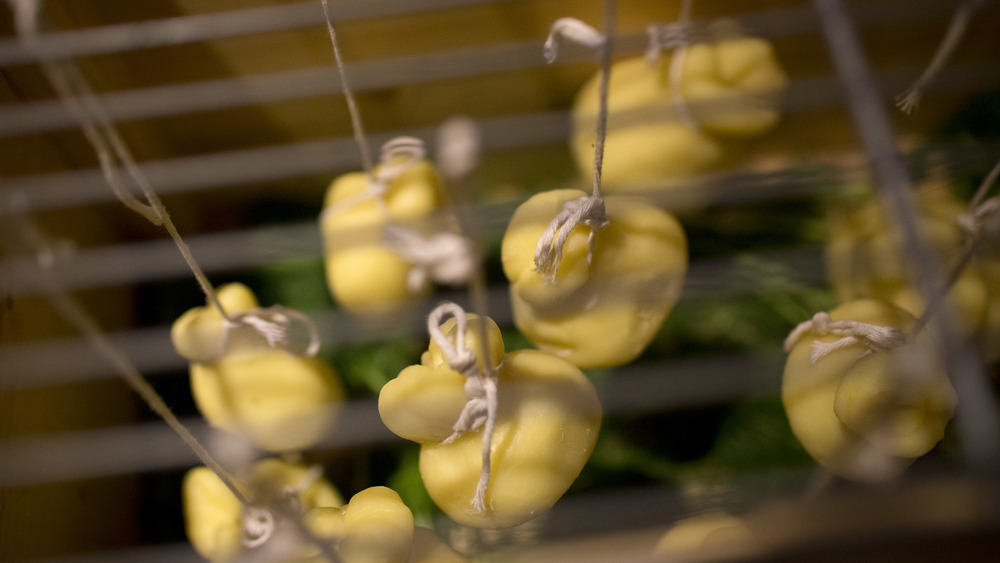What Is Scamorza And What Does It Taste Like?
Scamorza is both fun to say and delicious to eat. The cheese has an instantly recognizable hourglass-shaped figure that is almost pear-like, making it, from a visual perspective, a unique cheese.
According to Cheese.com, it is a "spun cow's cheese milk" that hails from Italy. Its texture is similar to a "firm, dry Mozzarella" and it is made "throughout Apulia and in some parts of Campania and Molise." The smoked version is sold as "scamorzi affumicate," and both variations are "piquant, milky, and creamy." Scamorza was once made with buffalo milk, but nowadays is primarily cow's-milk-based.
Austin Monthly reports that scamorza is categorized as a "filata cheese" because it's stretched and folded multiple times — as is mozzarella — but it is "drier with a better melt and stronger flavor." Scamorza is mild, smooth, and makes a great addition to any cheese or charcuterie platter. The edible rind also helps to diversify the flavor profile of the unique cheese.
Where does the name come from?
Culture Cheese Magazine explains the process: "each scamorza is formed by breaking a piece weighing about 12 oz off the stretched curd, shaping and squeezing it into a ball and creating the traditional top knot." It's also noted that a rope is placed around the "neck" prior to the drying and aging process.
Some companies specifically smoke scamorza over pecan shells, which imparts a slightly nutty, almost caramel-y flavor to the smoked variations of the cheese. Inquirer notes that scamorza is made by hanging the formed and tied cheese from a rope for about 2 weeks, developing an edible rind and resulting in its trademark shape and appearance.
The word scamozzare means "to remove a part" in Italian, which is a clear reference to the cheese's misshapen aesthetic. It is delicious eaten in slices, paired with prosciutto or olives, or when cooked — on top of pasta, in sandwiches, or even pan-fried. It's also delicious paired simply with a glass of wine. Of course, it also melts beautifully on a pizza. Mozzarella may be a tried and true Italian cheese, but the next time you're working up a pizza, substitute some scamorza. You'll thank us.

